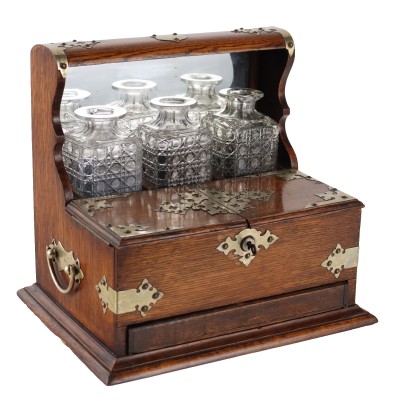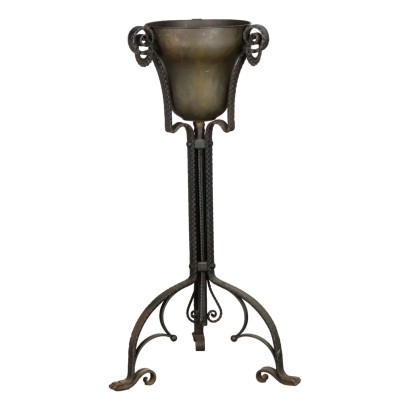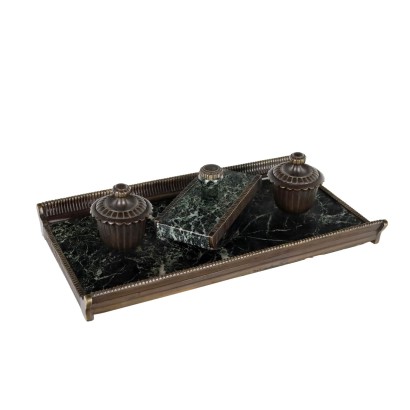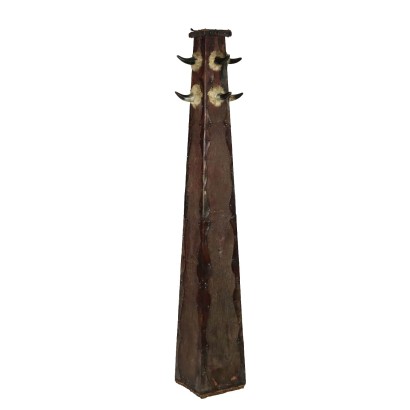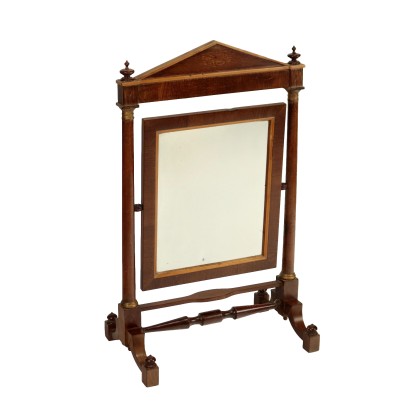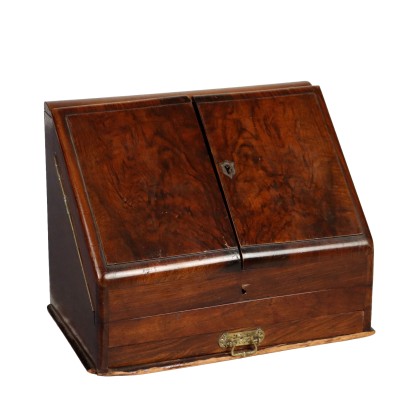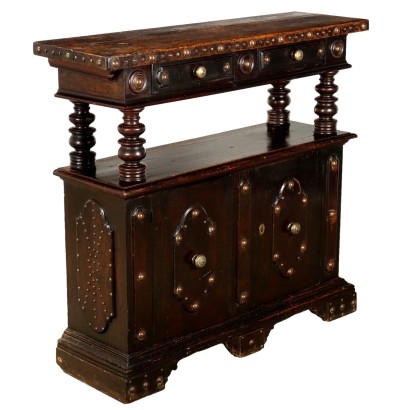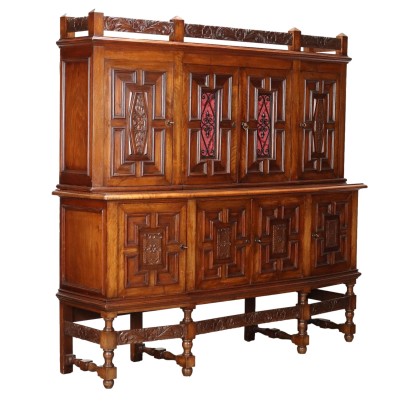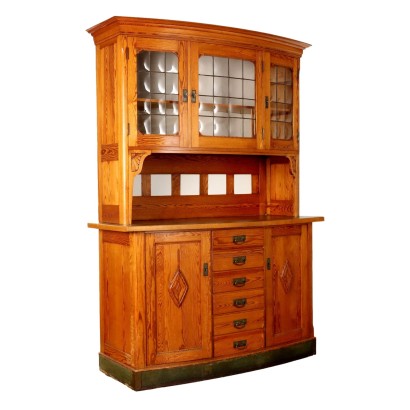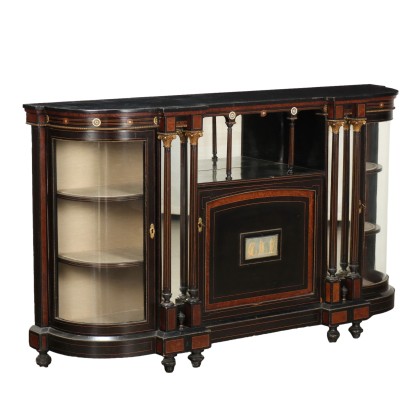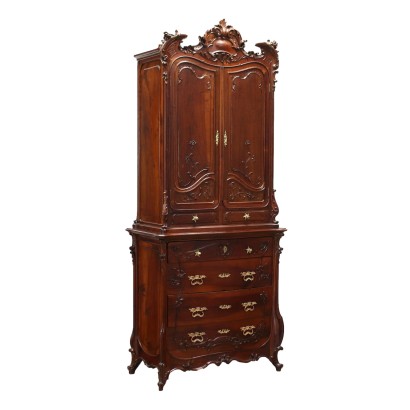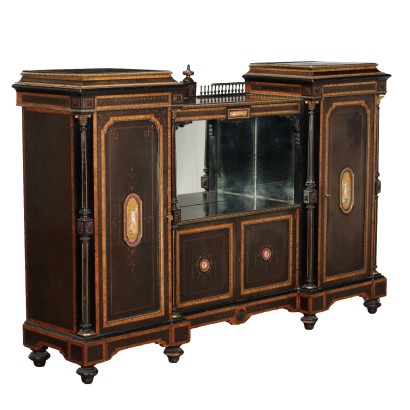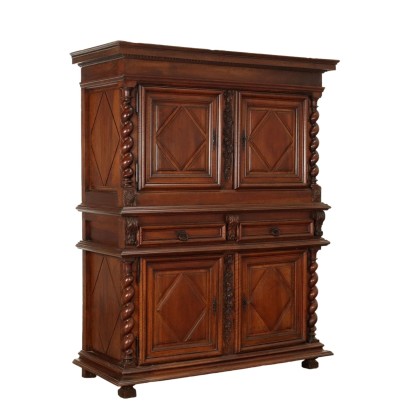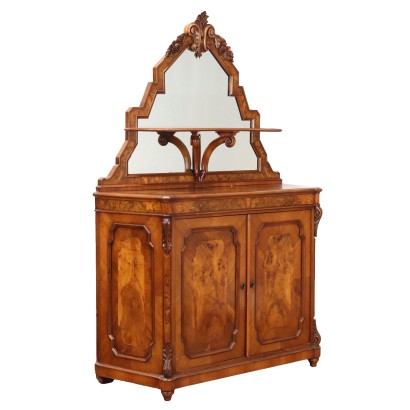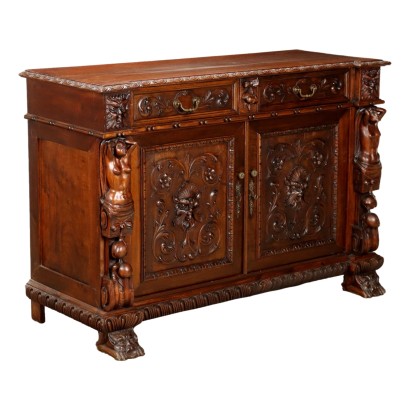Ancient Liquor Box First Half XX Century Oak Wood Metal - England, First Half XX Century
Features
England, First Half XX Century
Age: 20th Century / 1901 - 2000
Origin: England
Description
Oak wood liquor box with EPNS branded metal studded applications. Inside compartments for bottles and glasses; on the front extractable drawer. Set of three cut crystal bottles damaged and missing caps.
Product Condition:
Item in good condition, has small signs of wear. We try to present the real state of the object as completely as possible with photos. If some details are not clear from the photos, what is stated in the description applies.
Dimensions (cm):
Height: 34
Width: 38
Depth: 29
Additional Information
Notes historical bibliographic
E.P.N.S. In many articles, especially marketed in recent decades, it is common to find the "EPNS" symbol. This acronym stands for "Electro Plated Nickel-Silver", therefore it is not silver but a material obtained in England at the end of the eighteenth century. In that period, in fact, Galvani's scientific experiments allowed the introduction of various economical alloys into the European market, which had widespread diffusion above all thanks to this alloy and the so-called "white metal". In particular, during the nineteenth century there was the Elkington & Co. company which, having obtained a monopoly on the galvanic process, forced manufacturers to go to their headquarters in Birmingham to learn this process by paying a royalty and stamping their articles with the stamp of Elkington. At the same time this also happened in the United States, in particular in Philadelphia, where silver plating using a galvanic bath was introduced by Mead and subsequently by the three Rogers brothers, who joined together by founding a company with Mead. In Massachusetts, however, the productions of Babbit & Crossman and Reed were widespread, but the creative intuitions of the Gorham Corporation, founded in 1830 and soon becoming a partner of the company founded in New York by Charles L. Tiffany, were particularly appreciated. Thanks to the introduction of these electrogalvanic alloys, in England and subsequently in the USA, E.P.N.S. it progressively supplanted the Old Sheffield, commonly called Sheffield Plate, a material obtained by die-casting a copper plate onto two silver plates, a process discovered by chance by Thomas Bulsover while repairing his knife and which became widely used by the European bourgeoisie until second half of the eighteenth century.Age: 20th Century / 1901 - 2000
20th Century / 1901 - 2000Material:
Metal
Oak
Other customers have searched:
Oggettistica antica, ceramica antiquariato, bronzi antichi, servizi da tavola, oggetti barocco, centrotavola antico, oggetti antiquariato, oggetti collezionismo, oggetti antichi, torciere..
Se ti interessano gli oggetti d'arte e antichi Scopri qui tutte le presentazioni degli oggetti più belli, eleganti e preziosi su FineArt by Di Mano In Mano
Classic Monday: da un pezzo dei nostri magazzini alla storia dell'antiquariato
L'antiquariato dalla A alla Z: il Dizionario dell'Antiquariato
Il dizionario dell'antiquariato - Lastronatura
Il dizionario dell'antiquariato - Mascherone
Il dizionario dell'antiquariato - Natura morta
Il dizionario dell'antiquariato - Opificio
Il dizionario dell'antiquariato - Pastiglia
Il dizionario dell'antiquariato - Savonarola
Il dizionario dell'antiquariato - Rosone
Se ti interessano gli oggetti d'arte e antichi Scopri qui tutte le presentazioni degli oggetti più belli, eleganti e preziosi su FineArt by Di Mano In Mano
Leggi di più
Sull'antiquariato in generale dai un'occhiata anche a:Classic Monday: da un pezzo dei nostri magazzini alla storia dell'antiquariato
L'antiquariato dalla A alla Z: il Dizionario dell'Antiquariato
Il dizionario dell'antiquariato - Lastronatura
Il dizionario dell'antiquariato - Mascherone
Il dizionario dell'antiquariato - Natura morta
Il dizionario dell'antiquariato - Opificio
Il dizionario dell'antiquariato - Pastiglia
Il dizionario dell'antiquariato - Savonarola
Il dizionario dell'antiquariato - Rosone
Alternative proposals
It could also interest you

